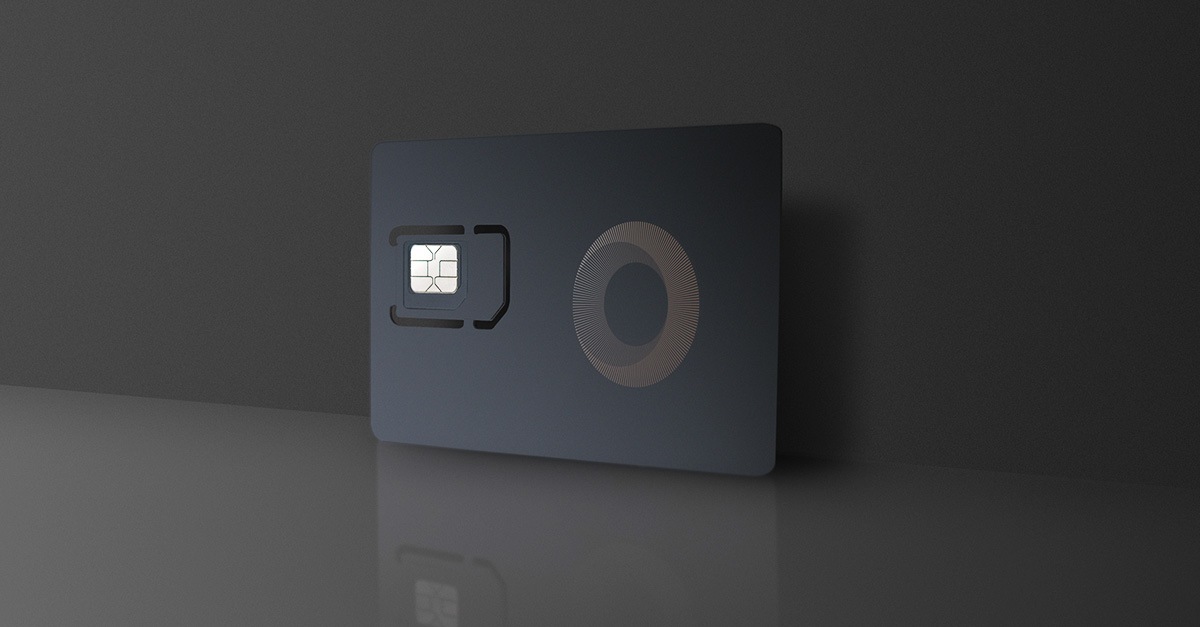Iot Remote Asset Monitoring Solution Basics of IoT Remote Monitoring
Remote Iot Monitoring Solution Top BI Solutions for IoT Monitoring
In the landscape of the Internet of Things (IoT), connectivity standards and protocols play a vital function in ensuring gadgets can talk seamlessly. As extra devices are connected, the necessity for effective interoperability increases, resulting in quite a lot of standards that serve totally different use cases and necessities. This comparability of IoT connectivity standards and protocols highlights the nuances that differentiate each technology, providing a clearer understanding of which might go well with particular purposes.
LoRaWAN (Long Range Wide Area Network) is among the dominant protocols usually utilized in IoT purposes that require long-range communication. Its low power consumption makes it significantly effective for battery-operated gadgets, enabling them to operate for several years without having a battery replacement. The protocol is designed for broad area networks, making it appropriate for urban, rural, and remotely deployed units corresponding to environmental screens and smart metropolis purposes.
It Remote Monitoring Software Best IoT Monitoring Software 2024
On the other finish of the spectrum, MQTT (Message Queuing Telemetry Transport) is a light-weight protocol designed for resource-constrained units and low-bandwidth, high-latency networks. Due to its publish-subscribe model, it permits gadgets to speak in near real-time, making it especially in style for purposes in smart homes and industrial automation. MQTT just isn't constrained by location, enabling gadgets to communicate regardless of the place they're situated, as long as there is internet entry.
Zigbee and Z-Wave are two other protocols that have gained traction, particularly in house automation contexts. Zigbee operates on low power and is designed for low information price wireless private area networks. With its mesh networking functionality, it facilitates communication between multiple devices, creating a sturdy community that can lengthen its vary significantly. Z-Wave, whereas comparable, usually operates on a lower frequency and has a distinct structure that tends to work better in indoor settings. Its focusing on of consumer merchandise provides it an edge in user-friendly applications.
Bluetooth additionally plays an important function in IoT connectivity, especially in wearable expertise and nearby communication eventualities. The introduction of Bluetooth Low Energy (BLE) has expanded its functionality by permitting units to speak with minimal battery usage. This protocol is good for purposes the place low power is essential but nonetheless requires an inexpensive information throughput. The range tends to be shorter, making it appropriate for environments like personal health units, smart locks, and different proximity-focused technologies.
Another vital participant in the IoT area is Cellular connectivity, together with LTE and the emerging 5G networks. These technologies supply high knowledge charges and widespread coverage, making them best for functions that require real-time data switch, corresponding to autonomous vehicles and distant surveillance techniques. However, their power consumption is usually larger compared to different protocols, which can be a limiting factor for IoT units with battery constraints. The evolution of 5G is especially thrilling, as it guarantees to facilitate even bigger numbers of connected devices with decrease latency.
It Remote Monitoring Software Vessel Monitoring Solutions Using IoT
A lesser-known, but impactful, standard is NB-IoT (Narrowband IoT), specifically designed for low-power, wide-area networks. It helps a high variety of related gadgets over a larger area, making it well-suited for rural functions, smart metering, and smart agriculture. Its low bandwidth requirements are enough for transmitting small data packets, permitting devices to perform successfully with minimal power consumption.
Comparing these protocols, a major factor to contemplate is the stability between vary, power consumption, and knowledge rate. Zigbee and Z-Wave excel in mesh networks however could not cover as extensive an area as LoRaWAN. Meanwhile, protocols like MQTT can prioritize knowledge switch efficiency over distance. The alternative between using a cellular framework or a specialised IoT protocol usually hinges upon the specific wants of an utility, including geographic and technical constraints.
Security stays a pressing concern throughout IoT implementations. With the number of connectivity standards, ensuring secure communication is paramount. Various protocols handle security in several methods, incorporating measures corresponding to Our site encryption and authentication protocols to safeguard data. MQTT, as an example, allows for secure connections and payload encryption, whereas protocols like LoRaWAN have mechanisms to authenticate units speaking over the network.
Role Of Smart Sensors In Iot Protecting IoT Devices through Monitoring
Compatibility is one other important side. As manufacturers increasingly develop IoT options, the power to attach units from completely different vendors is essential. Iot Remote Monitoring Solution. Standards like Zigbee and Z-Wave have established certification packages to authenticate devices’ interoperability. This compatibility fosters a extra cohesive smart house environment, permitting units to work in live performance rather than isolation.
Future developments in IoT connectivity standards are regularly increasing the chances. Researchers and trade experts are creating superior protocols that combine the strengths of present technologies whereas addressing their weaknesses. The integration of artificial intelligence (AI) and machine learning into IoT networks is additional enhancing automation and data analysis, pushing protocols to evolve and enhance in real-time.
Ultimately, deciding on an IoT connectivity standard or protocol isn't merely a technical choice; it ought to align with the targets of the application and the needs of its customers. The proper choice might imply the distinction between a successful deployment and a project suffering from interoperability challenges, pointless prices, or reduced performance.
As IoT know-how continues to mature, the significance of understanding and deciding on appropriate connectivity standards and protocols will only grow. Industry members and builders should remain vigilant of trends and modifications that influence the ecosystem. Knowledge of those protocols is crucial, as it equips stakeholders to make informed decisions that may outline the following technology of connectivity.
Iot Global How IoT Remote Monitoring Functions

In conclusion, the comparison of IoT connectivity standards and protocols reveals a complex however fascinating panorama. By understanding the benefits and limitations of each standard, builders could make educated decisions that will optimize their IoT deployments, enhancing efficiency and effectiveness and in the end paving the way for a more connected and clever future.
- Various IoT connectivity standards, similar to MQTT, CoAP, and HTTP, cater to different information transmission wants, influencing efficiency and utility suitability.
- MQTT is light-weight and optimized for high-latency networks, making it ideal for low-bandwidth, resource-constrained devices.
- CoAP helps RESTful interactions and operates over UDP, allowing for reduced overhead in comparability with traditional protocols used over TCP.
- Zigbee and Z-Wave focus on low-power, low-data functions, good for smart home gadgets and sensor networks.
- NB-IoT and LTE-M offer cellular connectivity particularly designed for IoT purposes, providing wider protection and better penetration in city environments.
- Wi-Fi and Bluetooth, while prevalent, can battle with power consumption and scalability in large IoT ecosystems, making them much less ideal for sure use cases.
- LoRaWAN permits long-range, low-power communication, ideal for functions in remote areas requiring rare data transmission.
- Each standard or protocol could come with distinctive security measures, influencing the selection based mostly on the IoT deployment's risk model.
- The rising trend of multi-protocol environments permits devices to modify between standards, enhancing flexibility and interoperability within IoT ecosystems.
- Compatibility issues can come up from numerous IoT connectivity standards, necessitating cautious planning to ensure seamless communication throughout gadgets and platforms.undefinedWhat are the primary IoT connectivity standards obtainable today?
The main IoT connectivity standards include MQTT, CoAP, LoRaWAN, Z-Wave, Zigbee, and cellular standards like NB-IoT and LTE-M. Each of those standards serves different use circumstances, offering varying ranges, energy consumption, and data transmission capabilities.
How does MQTT differ from CoAP by means of use cases?
Iot Remote Monitoring And Control IoT Wireless Sensors for Monitoring
MQTT is designed for high-latency and low-bandwidth environments, making it glorious for situations requiring reliable messaging, corresponding to remote monitoring. CoAP, however, is tailor-made for constrained devices and networks, making it appropriate for purposes like smart residence automation where simplicity and efficiency are essential.
What factors ought to I consider when selecting an IoT protocol for my application?
Key factors embody the application’s requirements for vary, energy consumption, knowledge payload dimension, and network situations. Additionally, think about the extent of security and scalability wanted, in addition to see infrastructure and gadget interoperability.
Iot Remote Monitoring And Control Importance of Industrial Remote Monitoring
Is security a major concern when evaluating IoT connectivity standards?

Yes, security is a paramount concern. Different standards offer varying ranges of safety features, like information encryption and authentication measures. It’s important to evaluate how each standard addresses potential vulnerabilities to ensure the protection of delicate information.
Which connectivity protocol is finest for long-range communication?
Remote Monitoring Solutions Management and Monitoring with IoT
LoRaWAN is often thought-about the most effective for long-range communication due to its capability to cowl distances of as much as 15 kilometers in rural areas. It is particularly efficient in functions like agricultural monitoring and smart city deployments where units are unfold out over massive areas.
How do power consumption levels differ amongst completely different IoT protocols?
Iot Global Advantages of IoT Monitoring Systems

Power consumption varies considerably amongst protocols. For instance, LoRaWAN and Zigbee are designed for low energy utilization, suitable for battery-operated devices needing long operational life. In distinction, cellular protocols like NB-IoT would possibly devour extra power but offer larger bandwidth for important functions.
Can multiple connectivity standards coexist in the identical IoT environment?
Yes, multiple connectivity standards can coexist inside the same environment. This allows for larger flexibility and integration of varied units across different functions. However, it does require a well-architected system that may manage and route data between different protocols successfully.
Remote Iot Monitoring Solution Benefits of IoT Remote Monitoring
What role does scalability play in choosing an IoT connectivity standard?
Scalability is crucial when selecting a connectivity standard, especially for applications anticipated to develop over time. Some protocols enable for simple addition of gadgets and seamless integration into current networks, whereas others may have limitations that could hinder expansion.
Are there particular industries that favor explicit IoT protocols?
- Remote Monitoring Solutions
Remote Monitoring Using Iot Enhancing Efficiency with IoT Monitoring
Yes, particular industries often favor particular IoT protocols based mostly on their distinctive necessities. For instance, smart agriculture tends to favor LoRaWAN as a result of its long range, while house automation typically utilizes Zigbee or Z-Wave for his or her low energy consumption and mesh networking capabilities.